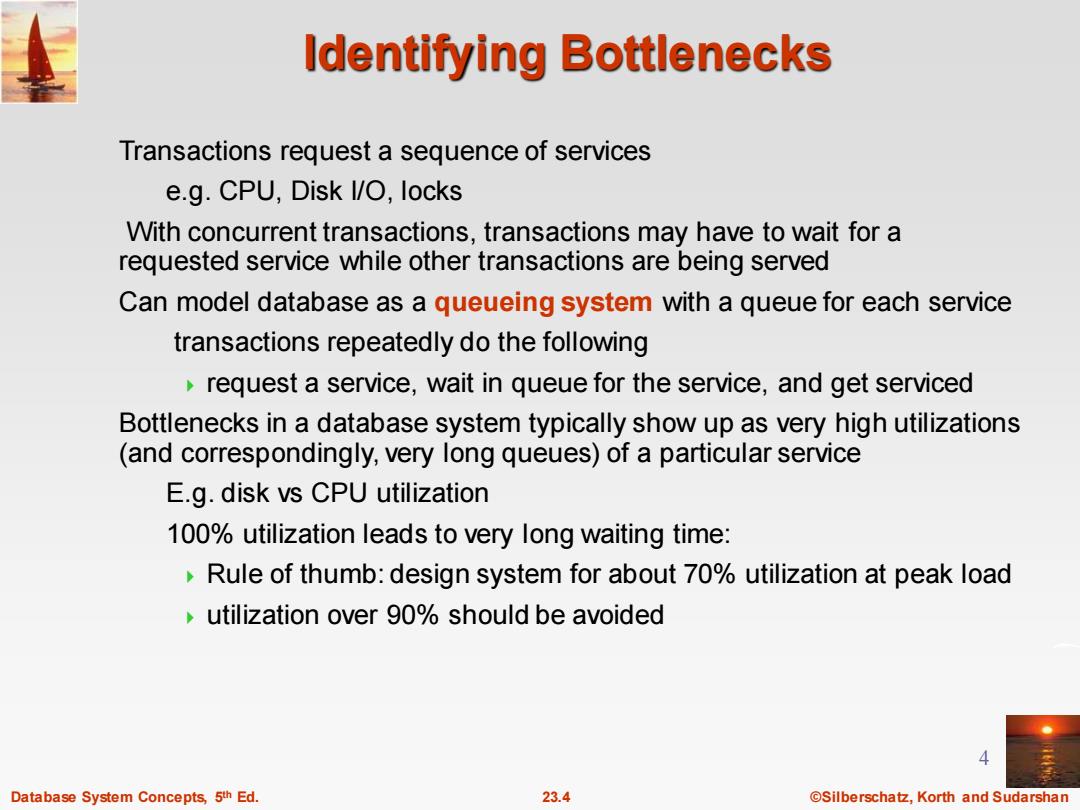正在加载图片...

ldentifying Bottlenecks Transactions request a sequence of services e.g.CPU,Disk I/O,locks With concurrent transactions,transactions may have to wait for a requested service while other transactions are being served Can model database as a queueing system with a queue for each service transactions repeatedly do the following request a service,wait in queue for the service,and get serviced Bottlenecks in a database system typically show up as very high utilizations (and correspondingly,very long queues)of a particular service E.g.disk vs CPU utilization 100%utilization leads to very long waiting time: Rule of thumb:design system for about 70%utilization at peak load utilization over 90%should be avoided Database System Concepts,5th Ed. 23.4 @Silberschatz,Korth and SudarshanDatabase System Concepts, 5 23.4 ©Silberschatz, Korth and Sudarshan th Ed. 4 Identifying Bottlenecks Transactions request a sequence of services e.g. CPU, Disk I/O, locks With concurrent transactions, transactions may have to wait for a requested service while other transactions are being served Can model database as a queueing system with a queue for each service transactions repeatedly do the following request a service, wait in queue for the service, and get serviced Bottlenecks in a database system typically show up as very high utilizations (and correspondingly, very long queues) of a particular service E.g. disk vs CPU utilization 100% utilization leads to very long waiting time: Rule of thumb: design system for about 70% utilization at peak load utilization over 90% should be avoided